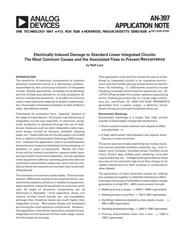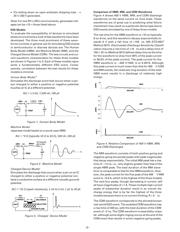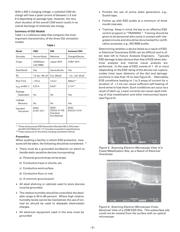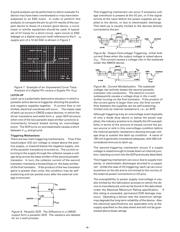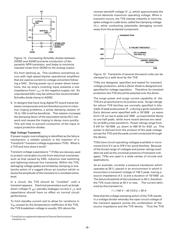Datasheet 搜索 > AD转换器 > ADI(亚德诺) > AD7788BRMZ-REEL 数据手册 > AD7788BRMZ-REEL 其他数据使用手册 1/8 页
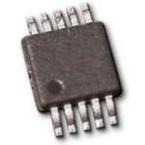
 器件3D模型
器件3D模型¥ 15.191
AD7788BRMZ-REEL 其他数据使用手册 - ADI(亚德诺)
制造商:
ADI(亚德诺)
分类:
AD转换器
封装:
MSOP-10
描述:
低功耗, 16位/ 24位Σ-Δ型ADC Low Power, 16-/24-Bit, Sigma-Delta ADCs
Pictures:
3D模型
符号图
焊盘图
引脚图
产品图
页面导航:
技术参数、封装参数在P4
应用领域在P7P8
导航目录
AD7788BRMZ-REEL数据手册
Page:
of 8 Go
若手册格式错乱,请下载阅览PDF原文件

a
Electrically Induced Damage to Standard Linear Integrated Circuits:
The Most Common Causes and the Associated Fixes to Prevent
by Niall Lyne
AN-397
APPLICATION NOTE
ONE TECHNOLOGY WAY
•
P.O. BOX 9106
•
NORWOOD, MASSACHUSETTS 02062-9106
•
INTRODUCTION
The sensitivity of electronic components to transient
electrical overstress events is a well-known problem,
exacerbated by the continuing evolution of integrated
circuits. Smaller geometries, increased circuit densities,
and the limited area allotted to on-chip protection all
tend to increase this sensitivity. In an effort to minimize
costs in each particular segment of system implementa-
tion, the burden of transient protection is often shifted to
other, less efficient means.
Techniques for protection from “zapping” depend on
the stage of manufacture. During the manufacturing of
integrated circuits and assembly of electronic equip-
ment, protection is achieved through the use of well-
known measures such as static dissipative table tops,
wrist straps, ionized air blowers, antistatic shipping
tubes, etc. These methods will be discussed only briefly
here in relation to Electrostatic Discharge (ESD) protec-
tion. Likewise this application note is not addressed to
precautionary measures employed during shipping, in-
stallation, or repair of equipment. Rather, the main
thrust will be limited to protection aspects called upon
during printed circuit board assembly, normal operation
of the equipment (often by operating personnel who are
untrained in preventative measures), and in service con-
ditions where the transient environment may not be well
characterized.
The transient environment varies widely. There are sub-
stantial differences among those experienced by, say,
automotive systems, airborne or shipborne equipment,
space systems, industrial equipment or consumer prod-
ucts. All types of electronic components can be
destroyed or degraded.
1
Even capacitors, relays, con-
nectors, printed circuit boards, etc., are susceptible,
although their threshold levels are much higher than
integrated circuits. Microwave diodes and transistors
are among the most sensitive components. However,
this application note will be restricted to standard linear
integrated circuits because of their wide usage, and to
limit the scope of coverage.
This application note will first review the nature of the
threat to integrated circuits in an operating environ-
ment, and then briefly discuss overall device protection
from the following: (1)
ESD
events caused by human
handling, automatic board insertion equipment, etc., (2)
LATCH-UP
generated from power-up/down sequencing
errors, floating ground(s) due to a loose edge connec-
tors, etc., and finally, (3)
HIGH VOLTAGE TRANSIENTS
generated from a power supply, a defective circuit
board, during circuit board troubleshooting, etc.
Electrostatic Discharge
Electrostatic discharge is a single, fast, high current
transfer of electrostatic charge that results from:
• Direct contact transfer between two objects at differ-
ent potentials,
or
• A high electrostatic field between two objects when
they are in close proximity.
The prime sources of static electricity are mostly insula-
tors and are typically synthetic materials, e.g., vinyl or
plastic work surfaces, insulated shoes, finished wood
chairs, Scotch tape, bubble pack, soldering irons with
ungrounded tips, etc. Voltage levels generated by these
sources can be extremely high since their charge is not
readily distributed over their surfaces or conducted to
other objects.
The generation of static electricity caused by rubbing
two substances together is called the triboelectric effect.
Examples of sources of triboelectric electrostatic charge
generation in a high RH ( ≈60%) environment include:
• Walking across a carpet ⇒ 1000 V–1500 V generated.
• Walking across a vinyl floor ⇒ 150 V–250 V generated.
• Handling material protected by clear plastic covers ⇒
400 V–600 V generated.
• Handling polyethylene bags ⇒ 1000 V–1200 V generated.
• Pouring polyurethane foam into a box ⇒ 1200 V–
1500 V generated.
781/329-4700
Reccurrence
器件 Datasheet 文档搜索
AiEMA 数据库涵盖高达 72,405,303 个元件的数据手册,每天更新 5,000 多个 PDF 文件
